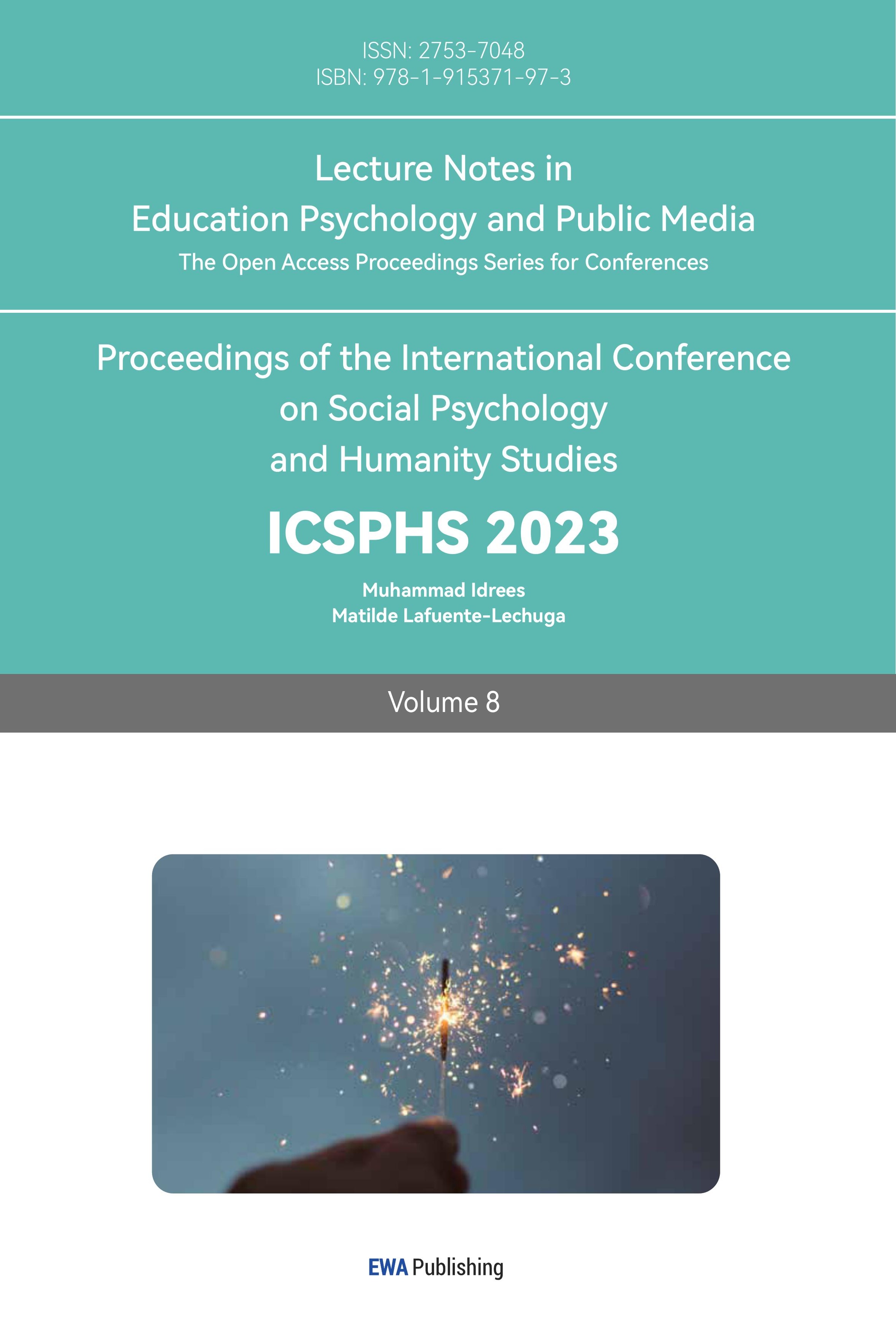References
[1]. Lerner, J.. (1994) Venture Capital and the Oversight of Privately-held Firms. Journal of Financial Economics, 35(11), 293-316.
[2]. Zhao Lijia. (2021) The Development Status of Private Equity Investment Fund and Its Influence on Social Financing Scale in China. China Management Informationization, 24, 171-172.
[3]. Gregg A. Jarrell, James A. Brickley & Jeffry M. Netter. (1988) The Market for Corporate Control: The Empirical Evidence Since 1980. J. ECON. PERsP, 49(2), 51-52.
[4]. John L. Chapman, Peter G. Klein. (2011) Value Creation in Middle-Market Buyouts: A Transaction-Level Analysis, in Private Equity: Fund Types, Risks and Returns, and Regulation. John Wiley & Sons, Ltd, 229, 245-246.
[5]. Elisabeth de Fontenay. (2019) Private Equity’s Governance Advantage: A Requiem. B.U. L. REV. 99, 1095-1103.
[6]. Francesca Cornelli, Oguzhan Karakas. (2008) Private Equity and Corporate Governance: Do LBOs Have More Effective Boards? Globalization of Alternative Investments Working Papers Volume 1: the Global Economic Impact of Private Equity Report, 1, 65-73.
[7]. Ronald W. Masulis, Randall S.Thomas. (2009) Does Private Equity Create Wealth? The Effects of Private Equity and Derivatives on Corporate Governance. U. CHI. L. REV. 219(76), 251-252.
[8]. Edward Stringham, Jack Vogel. (2018) The leveraged invisible hand: how private equity enhances the market for corporate control and capitalism itself. EUR. J.L. & ECON. 223(46), 236.
[9]. Zhan Zhenghua, Zhou Juanyan. (2018) Research on the Influence of Private Equity Investment on the Business Performance of Listed SMEs: Empirical Analysis Based on the Data of Small and Medium-sized Board Enterprises. Market Forum, 1, 66-67.
[10]. Jarrod Shobe. (2016) Misaligned Interests in Private Equity. BYU L. REV. 1435, 1444.
[11]. David A. Weisbach, (2008) The Taxation of Carried Interests in Private Equity. VA. L. REV. 94, 715-716.
[12]. William Magnuson. (2018) The Public Cost of Private Equity, MINN. L. REV. 102, 1847-1851.
[13]. Onnig H. Dombalagian. (2011) Regulating Informational Intermediation, AM. U. Bus. L. REV. 1, 58-59.
Cite this article
Xiao,Y. (2023). Private Equity as an Effective Tool for Capital Raising: Legal Risks and Countermeasures. Lecture Notes in Education Psychology and Public Media,8,392-399.
Data availability
The datasets used and/or analyzed during the current study will be available from the authors upon reasonable request.
Disclaimer/Publisher's Note
The statements, opinions and data contained in all publications are solely those of the individual author(s) and contributor(s) and not of EWA Publishing and/or the editor(s). EWA Publishing and/or the editor(s) disclaim responsibility for any injury to people or property resulting from any ideas, methods, instructions or products referred to in the content.
About volume
Volume title: Proceedings of the International Conference on Social Psychology and Humanity Studies
© 2024 by the author(s). Licensee EWA Publishing, Oxford, UK. This article is an open access article distributed under the terms and
conditions of the Creative Commons Attribution (CC BY) license. Authors who
publish this series agree to the following terms:
1. Authors retain copyright and grant the series right of first publication with the work simultaneously licensed under a Creative Commons
Attribution License that allows others to share the work with an acknowledgment of the work's authorship and initial publication in this
series.
2. Authors are able to enter into separate, additional contractual arrangements for the non-exclusive distribution of the series's published
version of the work (e.g., post it to an institutional repository or publish it in a book), with an acknowledgment of its initial
publication in this series.
3. Authors are permitted and encouraged to post their work online (e.g., in institutional repositories or on their website) prior to and
during the submission process, as it can lead to productive exchanges, as well as earlier and greater citation of published work (See
Open access policy for details).
References
[1]. Lerner, J.. (1994) Venture Capital and the Oversight of Privately-held Firms. Journal of Financial Economics, 35(11), 293-316.
[2]. Zhao Lijia. (2021) The Development Status of Private Equity Investment Fund and Its Influence on Social Financing Scale in China. China Management Informationization, 24, 171-172.
[3]. Gregg A. Jarrell, James A. Brickley & Jeffry M. Netter. (1988) The Market for Corporate Control: The Empirical Evidence Since 1980. J. ECON. PERsP, 49(2), 51-52.
[4]. John L. Chapman, Peter G. Klein. (2011) Value Creation in Middle-Market Buyouts: A Transaction-Level Analysis, in Private Equity: Fund Types, Risks and Returns, and Regulation. John Wiley & Sons, Ltd, 229, 245-246.
[5]. Elisabeth de Fontenay. (2019) Private Equity’s Governance Advantage: A Requiem. B.U. L. REV. 99, 1095-1103.
[6]. Francesca Cornelli, Oguzhan Karakas. (2008) Private Equity and Corporate Governance: Do LBOs Have More Effective Boards? Globalization of Alternative Investments Working Papers Volume 1: the Global Economic Impact of Private Equity Report, 1, 65-73.
[7]. Ronald W. Masulis, Randall S.Thomas. (2009) Does Private Equity Create Wealth? The Effects of Private Equity and Derivatives on Corporate Governance. U. CHI. L. REV. 219(76), 251-252.
[8]. Edward Stringham, Jack Vogel. (2018) The leveraged invisible hand: how private equity enhances the market for corporate control and capitalism itself. EUR. J.L. & ECON. 223(46), 236.
[9]. Zhan Zhenghua, Zhou Juanyan. (2018) Research on the Influence of Private Equity Investment on the Business Performance of Listed SMEs: Empirical Analysis Based on the Data of Small and Medium-sized Board Enterprises. Market Forum, 1, 66-67.
[10]. Jarrod Shobe. (2016) Misaligned Interests in Private Equity. BYU L. REV. 1435, 1444.
[11]. David A. Weisbach, (2008) The Taxation of Carried Interests in Private Equity. VA. L. REV. 94, 715-716.
[12]. William Magnuson. (2018) The Public Cost of Private Equity, MINN. L. REV. 102, 1847-1851.
[13]. Onnig H. Dombalagian. (2011) Regulating Informational Intermediation, AM. U. Bus. L. REV. 1, 58-59.









